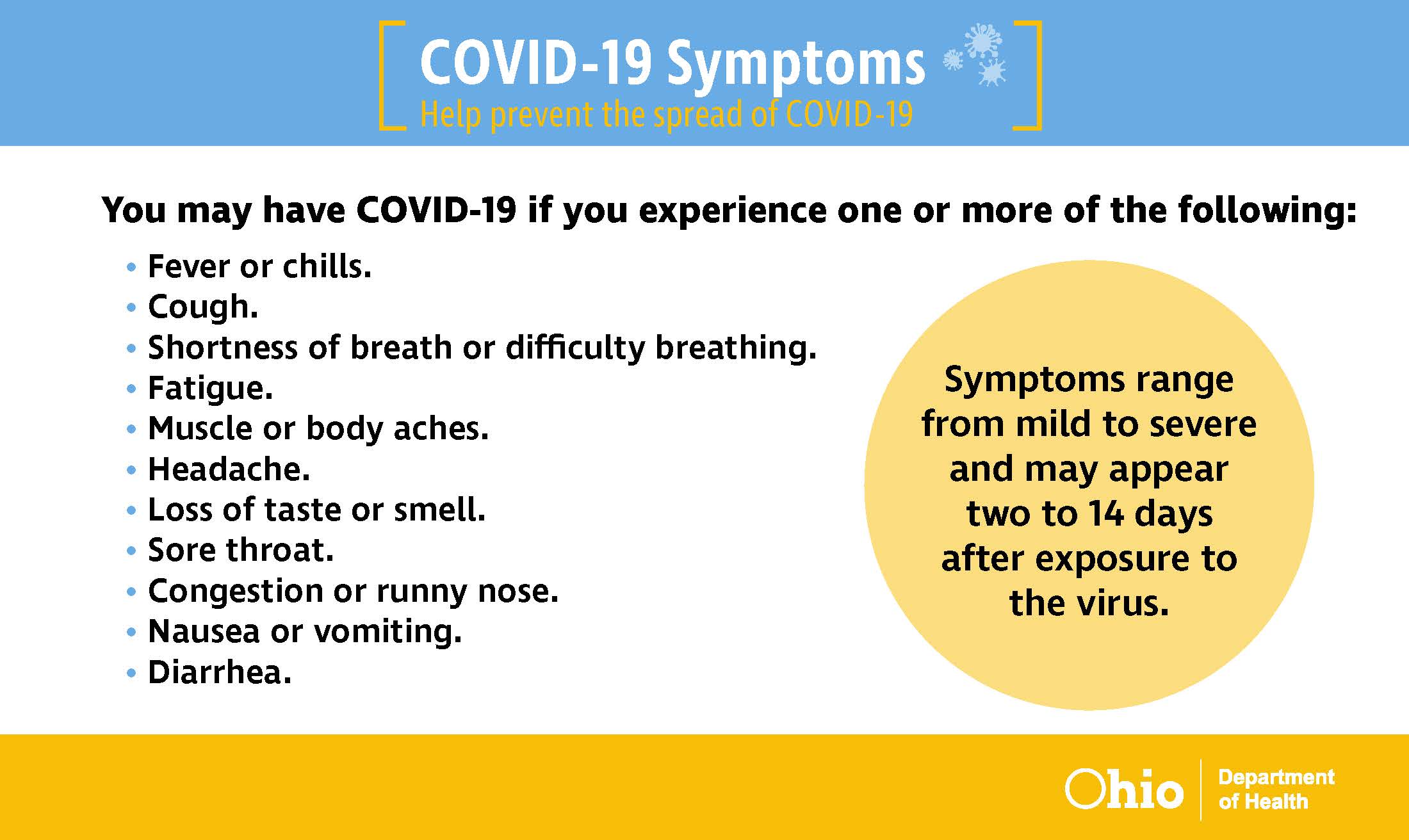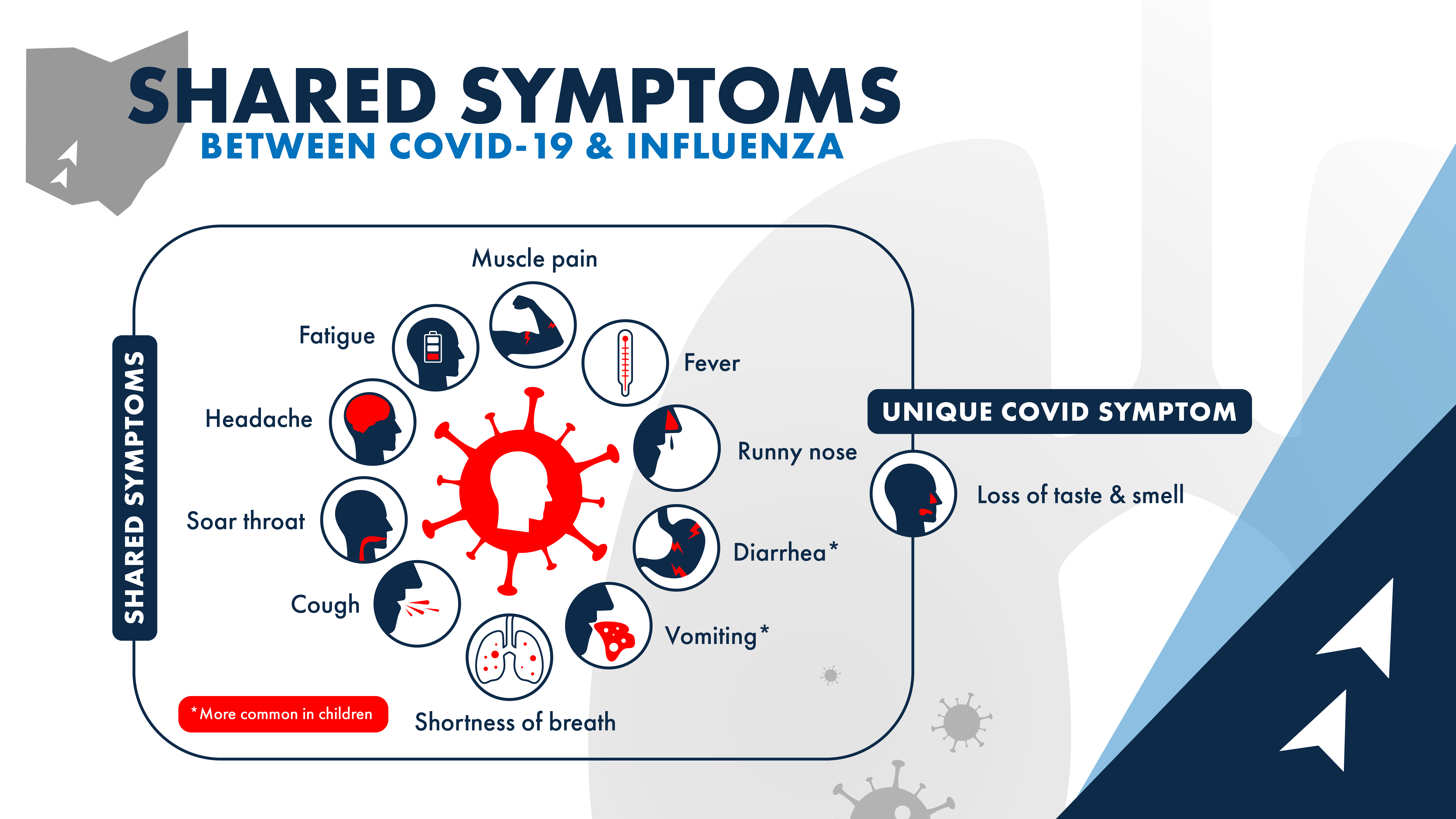COVID-19 Symptoms
What you need to know
- COVID-19 Symptoms are updated frequently and the best resource is the CDC webpage discussing current symptoms. Our Public Health team will do our best to update this site as well.
- Anyone can have mild to severe symptoms.
- Older adults and people who have severe underlying medical conditions like heart or lung disease or diabetes seem to be at higher risk for developing more serious complications from COVID-19 illness.
- A poster to hang in your workplace can be found here. (link to poster/signage area)
Watch for symptoms
People with COVID-19 have had a wide range of symptoms reported – ranging from mild symptoms to severe illness. Symptoms may appear 2-14 days after exposure to the virus. People with these symptoms may have COVID-19:

- Fever or chills
- Cough
- Shortness of breath or difficulty breathing
- Fatigue
- Muscle or body aches
- Headache
- New loss of taste or smell
- Sore throat
- Congestion or runny nose
- Nausea or vomiting
- Diarrhea
When to seek emergency medical attention
Look for emergency warning signs for COVID-19. If someone is showing any of these signs, seek emergency medical care immediately:
- Trouble breathing
- Persistent pain or pressure in the chest
- New confusion
- Inability to wake or stay awake
- Bluish lips or face
- This list is not all possible symptoms. Please call your medical provider for any other symptoms that are severe or concerning to you.
Call 911 or call ahead to your local emergency facility: Notify the operator that you are seeking care for someone who has or may have COVID-19.
What is the difference between Influenza (Flu) and COVID-19?
SIGNS and SYMPTOMS
Similarities
Both COVID-19 and flu can have varying degrees of signs and symptoms, ranging from no symptoms (asymptomatic) to severe symptoms. Common symptoms that COVID-19 and flu share include:

- Fever or feeling feverish/chills
- Shortness of breath or difficulty breathing
- Fatigue (tiredness)
- Sore throat
- Runny or stuffy nose
- Muscle pain or body aches
- Headache
- Some people may have vomiting and diarrhea, though this is more common in children than adults
- Cough
Differences:
Flu: Flu viruses can cause mild to severe illness, including common signs and symptoms listed above.
COVID-19: COVID-19 seems to cause more serious illnesses in some people. Other signs and symptoms of COVID-19, different from flu, may include change in or loss of taste or smell.
How long symptoms appear after exposure and infection
Similarities:
For both COVID-19 and flu, 1 or more days can pass between a person becoming infected and when he or she starts to experience illness symptoms.
Differences:
If a person has COVID-19, it could take them longer to develop symptoms than if they had flu.
Flu: Typically, a person develops symptoms anywhere from 1 to 4 days after infection.
COVID-19: Typically, a person develops symptoms 5 days after being infected, but symptoms can appear as early as 2 days after infection or as late as 14 days after infection, and the time range can vary.